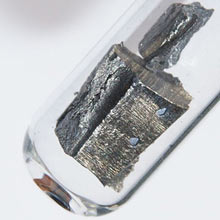 Photo via sanberdoo
Photo via sanberdoo
by Jaymi Heimbuch, San Francisco, California
How long can you expect new gadgets you bring into your home to last? From appliances to wireless network devices, we should have a better idea of how many years we can expect it to run without problems, so that we can make smart purchasing decisions. But beyond a two-year or five-year warranty, it can be a mystery just how long a dishwasher is expected to keep cleaning efficiently. Thankfully, the National Association of Home Builders has released a new study detailing the lifespans of many of our home””s electronics. So…about how long can you expect to have that new fridge?
The Study of Life Expectancy of Home Components lists everything from building materials to technology and is current for 2007 items. Technology has already changed a bit in just three years, but it””s still pretty accurate in terms of lifespan. Many of our major household appliances and gadgets will last over a decade, which is excellent when it comes to keeping what we have for as long as possible. It notes items such as:
Appliances:
* Dishwasher: 9 years
* Food Waste (“Garbage”) Disposer: 12 years
* Microwave Oven: 9 years
* Electric Range: 13 years
* Gas Range:15 years
* Range/Oven Hoods: 14 years
* Compact Refrigerator: 9 years
* Standard Refrigerator: 13 years
* Freezer: 11 years
* Washer: 10 years
* Electric Dryer: 11 years
* Gas Dryer: 10 years
* Furnaces: 15 to 20 years
* Tankless Water Heater: 20+ years
* Electric Water Heater: 11 years
* Gas Water Heater: 10 years
Devices:
* Built-In Audio System: 20 years
* Security Systems: 5 to 10 years
* Heat/Smoke Detectors: 5 to 10 years
* Wireless Home Networks: 50+ years
* Home Automation Systems: 50+ years
Unpluggd writes, “These figures might come in handy when you””re deciding whether to repair or replace an appliance or home system. If your tech is near the end of its projected useful life, it might be best to go brand-new.”
While we always back the idea of repairing what you have until it””s past even the miracle work of duct tape, it””s true that especially for home appliances, when it starts to reach the end of it””s useful life, it””s probably greener to replace it with a new energy star model rather than keep letting it run. For example, refrigerators last about a decade, but the technology and efficiency of today””s fridges can drastically show up the technology from 10 years ago. That means recycling the old and replacing with something new and highly efficient can be the best route.
Follow Jaymi on Twitter for more stories like this
http://www.treehugger.com/files/2010/10/whats-the-life-expectancy-of-your-homes-new-technology.php








